Reminiscing
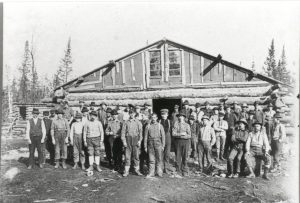
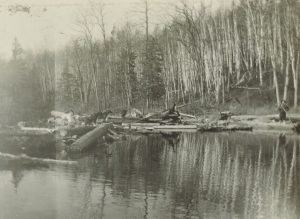 Established as a national forest in 1909, Superior National Forest is located in far northern Minnesota. Big pine timber logging began in the Superior National Forest in the 1890s and continued into the 1920s. Logging was not easy in Superior National Forest, and much of the area remained untouched because of the border lakes region, which presented numerous challenges to the logging companies in accessing and harvesting the stands of timber. In the 1890s, vast extents of the border lakes forests had been stripped away in Michigan and Wisconsin. The early logging was accomplished by means of river driving of logs. That was one of the types of logging that my grandfather was involved in. The logs were cut down,and then floated down the river to the saw mills. The method was a good one, but it could also be dangerous. Many a man was pinched between the logs, and many died. I’m very thankful my grandfather, Allen Luther Spencer was not one of those poor men who lost their lives doing this job. As timber near rivers became depleted, railroad logging became the primary method of getting the wood to the mill. Frozen ground conditions in the winter steered the logging industry to build ice roads providing greater access to timber stands. Logging after 1929 focused more and more on pulp species and the wood products industry.
Established as a national forest in 1909, Superior National Forest is located in far northern Minnesota. Big pine timber logging began in the Superior National Forest in the 1890s and continued into the 1920s. Logging was not easy in Superior National Forest, and much of the area remained untouched because of the border lakes region, which presented numerous challenges to the logging companies in accessing and harvesting the stands of timber. In the 1890s, vast extents of the border lakes forests had been stripped away in Michigan and Wisconsin. The early logging was accomplished by means of river driving of logs. That was one of the types of logging that my grandfather was involved in. The logs were cut down,and then floated down the river to the saw mills. The method was a good one, but it could also be dangerous. Many a man was pinched between the logs, and many died. I’m very thankful my grandfather, Allen Luther Spencer was not one of those poor men who lost their lives doing this job. As timber near rivers became depleted, railroad logging became the primary method of getting the wood to the mill. Frozen ground conditions in the winter steered the logging industry to build ice roads providing greater access to timber stands. Logging after 1929 focused more and more on pulp species and the wood products industry.
Soon, it became evident that the logging industry, while a good a profitable industry, had the potential to deplete the natural resources in the Superior National Forest. In 1921, Arthur Carhart (Forest Landscape Architect) published “Preliminary Prospectus: An Outline Plan for the Recreational Development of the Superior National Forest.” It was released following a survey conducted by Carhart and Forest Guard Soderback in the Boundary Waters region. This publication began to set the framework for the future designation of the BWCAW.
In 1930, Shipstead-Newton-Nolan Act was passed placing restrictions aimed at preserving the wilderness nature of lake and stream shorelines. By 1934, President Franklin D. Roosevelt designated the Quetico-Superior Committee to work with government agencies in the conservation, preservation, and use of northeast Minnesota’s wilderness areas. 1948 brought the Thye-Blatnik Act authorized the federal government to acquire private land holdings within roadless areas, thereby increasing federal acreage within the boundary waters roadless area. In 1949, the passage of Executive Order #10092, established an airspace boundary over the boundary waters roadless area. Highly controversial, this order effectively ended a particular type of recreation in the boundary waters, that of the remote fly-in resort. Resort operators had until 1951 to halt air traffic within 4000 feet of the roadless area.In 1958, The Superior Roadless Areas were renamed the Boundary Waters Canoe Area (BWCA). Conflict over motorized use in the roadless area increased during this time. The passage of the national Wilderness Act in 1964, with special provision regarding the BWCA, allowed some motorized use 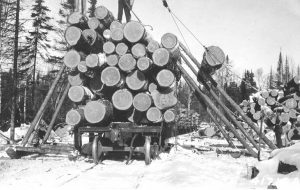
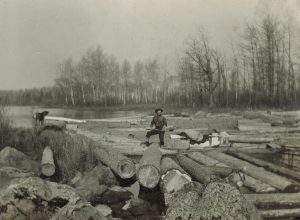 and logging within the Boundary Water’s wilderness boundaries, but by 1978, with the passage of the Boundary Waters Canoe Area Wilderness Act, which was specific to the BWCAW. This legislation eliminated logging and snowmobiling, restricted mining and allowed motorboats on 1/4 of the water area. While logging is necessary, I can’t help but agree with the preservation of the beautiful Superior National Forest.
and logging within the Boundary Water’s wilderness boundaries, but by 1978, with the passage of the Boundary Waters Canoe Area Wilderness Act, which was specific to the BWCAW. This legislation eliminated logging and snowmobiling, restricted mining and allowed motorboats on 1/4 of the water area. While logging is necessary, I can’t help but agree with the preservation of the beautiful Superior National Forest.
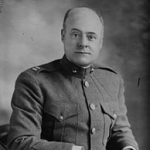 Anthony Joseph Drexel Biddle I (1874–1948) was an eccentric millionaire whose fortune allowed him to pursue theatricals, self-published writing, athletics, and Christianity on a full-time basis. He was the man upon whom the book “My Philadelphia Father” and the play and film “The Happiest Millionaire” were based, but even before that Biddle was eccentric…to say the least. Biddle was a trainer in hand-to-hand combat in both World War I and World War II. In fact, Biddle was an expert in hand-to-hand combat. He also had an unusual way of training his men. It was not unusual for Biddle to tell his trainees to attempt to kill him!! I can’t say for sure that he allowed them to use live ammunition, but he did give them “chance” to try to kill him before he could disarm them.
Anthony Joseph Drexel Biddle I (1874–1948) was an eccentric millionaire whose fortune allowed him to pursue theatricals, self-published writing, athletics, and Christianity on a full-time basis. He was the man upon whom the book “My Philadelphia Father” and the play and film “The Happiest Millionaire” were based, but even before that Biddle was eccentric…to say the least. Biddle was a trainer in hand-to-hand combat in both World War I and World War II. In fact, Biddle was an expert in hand-to-hand combat. He also had an unusual way of training his men. It was not unusual for Biddle to tell his trainees to attempt to kill him!! I can’t say for sure that he allowed them to use live ammunition, but he did give them “chance” to try to kill him before he could disarm them.
An officer in the United States Marine Corps, Biddle was an expert in close-quarters fighting and the author of “Do or Die: A Supplementary Manual on Individual Combat,” a book on combat methods, including knives and empty-hand skills, training both the United States Marine Corps in two world wars and Special Agents of the Federal Bureau of Investigation. He was considered not just an expert in fighting, but also a pioneer of United States Marine Corps training in the bayonet and hand-to-hand combat. He based his style on fencing, though this approach was sometimes criticized as being unrealistic for military combat. At one point, when it looked like there was no way out of a drill he assigned to his men…they were surrounding him, and for all intents and 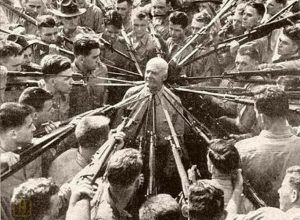 purposes, they had him. Nevertheless, the outcome was not what anyone would have expected, because within in a few minutes, Biddle had completely disarmed each and every one of the men.
purposes, they had him. Nevertheless, the outcome was not what anyone would have expected, because within in a few minutes, Biddle had completely disarmed each and every one of the men.
Born on October 1, 1874 in Philadelphia, Pennsylvania, to Edward Biddle II and Emily Drexel, Anthony was grandson of banker Anthony Joseph Drexel, and great-grandson of banker Nicholas Biddle. Biddle was a graduate of Germany’s Heidelberg University. He was a fellow of the American Geographical Society and founded a movement called “Athletic Christianity” that eventually attracted 300,000 members around the world. A 1955 Sports Illustrated article called him “boxing’s greatest amateur” as well as a “major factor in the re-establishment of boxing as a legal and, at that time, estimable sport.” He joined the Marines in 1917 at the age of 41, and convinced his superiors to include boxing in Marine Corps recruit training. In 1919, he was promoted to the rank of major, and became a lieutenant colonel in 1934. In Lansdowne, Pennsylvania, right outside of Philadelphia, Biddle opened a military training facility, where he trained 4,000 men. His training included long hours of calisthenics and gymnastics, and taught skills such as machete, saber, dagger, bayonet combat, hand grenade use, boxing, wrestling, savate and jiujitsu. He also served two years in the National Guard.
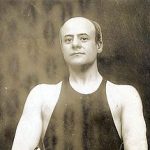 In 1895, he married Cordelia Rundell Bradley. Their marriage was blessed with three children, Anthony Joseph Drexel Biddle Jr. (1897–1961), who married Mary Duke (1887–1960). They were the parents of Mary Duke Biddle (1920–2012) and Nicholas Benjamin Duke Biddle. Their second child was Cordelia Drexel Biddle (1898–1984), who married Angier Buchanan Duke (1884–1923), the son of Benjamin Newton Duke. They were the parents of Angier Biddle Duke (1915–1995) and Anthony Drexel Duke (1918-2014). Their third child was Livingston Ludlow Biddle (1899–1981), who married Kate Raboteau Page (b. 1903), daughter of Robert N. Page. They were the parents of Livingston Ludlow Biddle III. Biddle died May 27, 1948 from a cerebral hemorrhage and uremic poisoning.
In 1895, he married Cordelia Rundell Bradley. Their marriage was blessed with three children, Anthony Joseph Drexel Biddle Jr. (1897–1961), who married Mary Duke (1887–1960). They were the parents of Mary Duke Biddle (1920–2012) and Nicholas Benjamin Duke Biddle. Their second child was Cordelia Drexel Biddle (1898–1984), who married Angier Buchanan Duke (1884–1923), the son of Benjamin Newton Duke. They were the parents of Angier Biddle Duke (1915–1995) and Anthony Drexel Duke (1918-2014). Their third child was Livingston Ludlow Biddle (1899–1981), who married Kate Raboteau Page (b. 1903), daughter of Robert N. Page. They were the parents of Livingston Ludlow Biddle III. Biddle died May 27, 1948 from a cerebral hemorrhage and uremic poisoning.
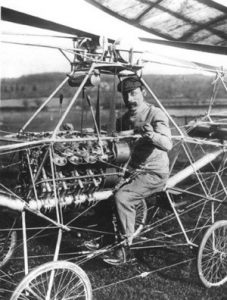 After the Wright brothers discovered a way to make a plane fly, all bets were off as to where the future would take us. It didn’t take very long to find out either. By 1907, a man named Paul Cornu came up with an entirely different type of aircraft, and built the Cornu Helicopter. As most of us know these days, the helicopter is a rotary-wing aircraft that creates its own lift. The Cornu helicopter was an experimental helicopter that was built in France. The craft had an open framework, that obviously didn’t provide much protection from the elements, and so was somewhat limited in when it could fly, but then there are still times when a helicopter can’t fly, so I guess that not much has changed in that respect.
After the Wright brothers discovered a way to make a plane fly, all bets were off as to where the future would take us. It didn’t take very long to find out either. By 1907, a man named Paul Cornu came up with an entirely different type of aircraft, and built the Cornu Helicopter. As most of us know these days, the helicopter is a rotary-wing aircraft that creates its own lift. The Cornu helicopter was an experimental helicopter that was built in France. The craft had an open framework, that obviously didn’t provide much protection from the elements, and so was somewhat limited in when it could fly, but then there are still times when a helicopter can’t fly, so I guess that not much has changed in that respect.
Cornu was a bicycle maker, and so he built his craft around a curved steel tube that carried a rotor at either end, and the engine and pilot in the middle. Power was transmitted to the rotors by a drive belt that linked both rotors and spun them in opposite directions. Control was to be provided by cables that could alter the pitch of the rotor blades, and by steerable vanes at either end of the machine intended to direct the down wash of the rotors. On November 13, 1907, the helicopter was ready for its test flight. The Cornu helicopter is reported to have made a number of short hops, rising perhaps 5–7 feet into the air and staying aloft for something less than one minute…just long enough for Cornu to learn that the control systems he had designed were ineffective. He abandoned the machine soon thereafter. I find it sad to think that, while the design wasn’t going to work in it’s present form, it was certainly not something to give upon. I’m reminded of the old saying, “If at first you don’t succeed…try, try again.” Perhaps, if Paul Cornu had kept trying, he could have succeeded.
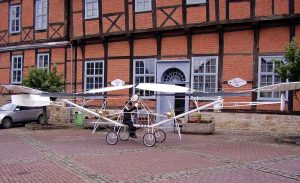 Modern engineering analyses have demonstrated that the Cornu helicopter could not have been capable of sustained flight. The design was flawed, nevertheless, in order to commemorate the centenary of his achievement, a replica of the helicopter was constructed by the École supérieure des techniques aéronautiques et de construction automobile (ESTACA) and presented to the Musée de l’Air et de l’Espace where it was placed on display on December 15, 2007. Another replica was also built. This one by the Hubschraubermuseum Bückeburg (Helicopter Museum of Bückeburg) to pay homage to the merits of Paul Cornu. It has been on display there since November 13, 2007. Though its fight was short, it did fly, after all.
Modern engineering analyses have demonstrated that the Cornu helicopter could not have been capable of sustained flight. The design was flawed, nevertheless, in order to commemorate the centenary of his achievement, a replica of the helicopter was constructed by the École supérieure des techniques aéronautiques et de construction automobile (ESTACA) and presented to the Musée de l’Air et de l’Espace where it was placed on display on December 15, 2007. Another replica was also built. This one by the Hubschraubermuseum Bückeburg (Helicopter Museum of Bückeburg) to pay homage to the merits of Paul Cornu. It has been on display there since November 13, 2007. Though its fight was short, it did fly, after all.
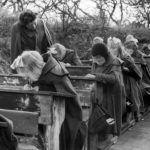 Tuberculosis was a disease that brought terror to the hearts of people over the years…especially right after World War II, but even before World War II, being diagnosed with Tuberculosis was like being given a death sentence. People had to be quarantined, so they wouldn’t infect those around them, since the disease is airborne. All too often it was too late by the time they knew they needed to be quarantined. Any serious disease can be scary for the people in areas affected, but this one was taken to a completely different level. In an effort to prevent Tuberculosis from being passed from child to child, the schools began a new movement, known as the Open-Air School. The movement required the establishment of schools that combined medical surveillance with A method of learning that was adapted to students with pre-tuberculosis…an obsolete term for the pre-clinical stage of tuberculosis. The new institution was established by doctors researching new prophylactic methods, and educators interested in an open air educational experience.
Tuberculosis was a disease that brought terror to the hearts of people over the years…especially right after World War II, but even before World War II, being diagnosed with Tuberculosis was like being given a death sentence. People had to be quarantined, so they wouldn’t infect those around them, since the disease is airborne. All too often it was too late by the time they knew they needed to be quarantined. Any serious disease can be scary for the people in areas affected, but this one was taken to a completely different level. In an effort to prevent Tuberculosis from being passed from child to child, the schools began a new movement, known as the Open-Air School. The movement required the establishment of schools that combined medical surveillance with A method of learning that was adapted to students with pre-tuberculosis…an obsolete term for the pre-clinical stage of tuberculosis. The new institution was established by doctors researching new prophylactic methods, and educators interested in an open air educational experience.
In 1904, Dr Bernhard Bendix and pedagogue Hermann Neufert founded the first school of this kind: the Waldeschule of Charlottenburg, near Berlin, Germany. Classes were conducted in the woods to offer open-air therapy to young city dwellers with pre-tuberculosis. The experiment, conducted by the International Congresses of Hygiene, was immediately attempted throughout Europe and North America: in Belgium in 1904, in Switzerland, England, Italy, and France in 1907, in the United States in 1908, in Hungary in 1910, and in Sweden in 1914. The schools were called “schools of the woods” or “open air schools.” Often they were remote from cities, set up in tents, prefabricated barracks, or re-purposed structures, and were run during the summer. Some of the more noteworthy experiments were the School in the Sun, in Cergnat, Switzerland and the school of Uffculme near Birmingham, England. 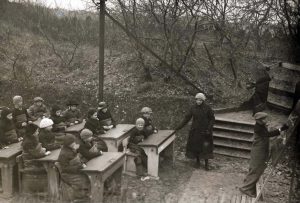 The School of the Sun used helio-therapy in 1910. Dr Auguste Rollier sent the children up to the mountains every morning equipped with portable equipment. The school of Uffculme, noted for its architecture, allowed each class to occupy its own independent pavilion in 1911.
The School of the Sun used helio-therapy in 1910. Dr Auguste Rollier sent the children up to the mountains every morning equipped with portable equipment. The school of Uffculme, noted for its architecture, allowed each class to occupy its own independent pavilion in 1911.
After World War I the movement became organized. The first International Congress took place in Paris in 1922, at the initiative of The League for Open Air Education created in France in 1906, and of its president, Gaston Lemonier. There were four more congresses: in Belgium in 1931; in Germany in 1936, marked by the involvement of German doctor Karl Triebold; in Italy in 1949; and in Switzerland in 1956. National committees were created. Jean Duperthuis, a close associate of Adolphe Ferrière (1879–1960), the well-known pedagogue and theorist of New Education, created the International Bureau of Open Air Schools to collect information on how these schools worked. Testimonies described an educational experience inspired by New Education, with much physical exercise, regular medical checkups, and a closely monitored diet, but there has been little formal study of the majority of these schools.
According to the ideas of the open air school, the architecture had to provide wide access to the outdoors, with large bay windows and a heating system that would permit working with the windows open. The most remarkable of these schools were in Amsterdam, Holland by architect Jan Duiker (1929–1930), in Suresnes, France by Eugène Beaudoin and Marcel Lods (1931–1935), and Copenhagen, Denmark by Kai Gottlob (1935–1938). From what I have seen, most of these school were held completely outdoors. I don’t know if the impact on Tuberculosis was as profound as they had hoped, but there were good things that came out of the  experiments. The movement had an influence on the evolution of education, hygiene, and architecture. School buildings, for example, adopted the concept of classes open to the outdoors, as in Bale, Switzerland (1938–1939, architect Hermann Baur), Impington, England (1939, Walter Gropius and Maxwell Fry), and in Los Angeles (1935, Richard Neutra). This influence is the major contribution of the open air schools movement, although the introduction of antibiotics, which increasingly provided a cure for Tuberculosis, pretty much made them obsolete after World War II. Nevertheless, fresh air, exercise, and playtime for young children have all remained an important part of the school day, and thankfully, Tuberculosis is on the decline, although it still ranks in the top 10 of fatal diseases.
experiments. The movement had an influence on the evolution of education, hygiene, and architecture. School buildings, for example, adopted the concept of classes open to the outdoors, as in Bale, Switzerland (1938–1939, architect Hermann Baur), Impington, England (1939, Walter Gropius and Maxwell Fry), and in Los Angeles (1935, Richard Neutra). This influence is the major contribution of the open air schools movement, although the introduction of antibiotics, which increasingly provided a cure for Tuberculosis, pretty much made them obsolete after World War II. Nevertheless, fresh air, exercise, and playtime for young children have all remained an important part of the school day, and thankfully, Tuberculosis is on the decline, although it still ranks in the top 10 of fatal diseases.
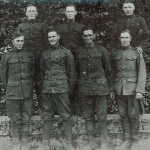 This day…Armistice Day was sometimes called the end of the war to end all wars. The phrase came from a book, and was really an idealistic statement, because as we all know there will always be a war somewhere. Nevertheless, it must have been overwhelming to think of basically the whole world at war. I’m sure the writer of the book, H G Wells, as well as many other people, hoped that through this awful war, humans could somehow learn to live with one another in peace. While that was not to be, this war, like every war, finally comes to an end. Armistice Day marks the armistice signed between the Allies of World War I and Germany at Compiègne, France, for the cessation of hostilities on the Western Front of World War I, which took effect at eleven o’clock in the morning, on the “eleventh hour of the eleventh day of the eleventh month” of 1918. That was, of course, 100 years ago today. Armistice Day is a national holiday in France. It coincides with Remembrance Day in England, and Veterans Day in the United States, and all three are really commemorating the same thing…the end of World War I. And all three are observed as a time to remember those heroes who served their country in that and all other wars. It is a day to remember those who fought and
This day…Armistice Day was sometimes called the end of the war to end all wars. The phrase came from a book, and was really an idealistic statement, because as we all know there will always be a war somewhere. Nevertheless, it must have been overwhelming to think of basically the whole world at war. I’m sure the writer of the book, H G Wells, as well as many other people, hoped that through this awful war, humans could somehow learn to live with one another in peace. While that was not to be, this war, like every war, finally comes to an end. Armistice Day marks the armistice signed between the Allies of World War I and Germany at Compiègne, France, for the cessation of hostilities on the Western Front of World War I, which took effect at eleven o’clock in the morning, on the “eleventh hour of the eleventh day of the eleventh month” of 1918. That was, of course, 100 years ago today. Armistice Day is a national holiday in France. It coincides with Remembrance Day in England, and Veterans Day in the United States, and all three are really commemorating the same thing…the end of World War I. And all three are observed as a time to remember those heroes who served their country in that and all other wars. It is a day to remember those who fought and 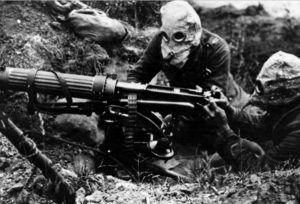 then returned home, but we can’t forget those who didn’t return home either.
then returned home, but we can’t forget those who didn’t return home either.
Because World War I ended on November 11, 1918, we have continued to remember November 11 as Veterans Day, Armistice Day, and Remembrance Day in honor of our soldiers. The armistice initially expired after a period of 36 days. A formal peace agreement was only reached when the Treaty of Versailles was signed the following year, but the Armistice was the beginning. It paved the way, and sometimes that is what is needed the most at a certain low time in history, or in life. Just a glimmer of hope can change the way we feel about things in a big way. It doesn’t matter what name is attached to the day, its all about the meaning of the day that matters. Our veterans have done so much for people they don’t even know, and they all deserve to be recognized for their very heroic acts.
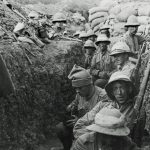 The date is a national holiday in France, England, the United States, and was also declared a national holiday in many Allied nations. In some countries Armistice Day coincides with Remembrance Day and Veterans Day, and other public holidays. Armistice Day is not celebrated in Germany, but a German national day of mourning, Volkstrauertag, has been observed on the Sunday closest to 16 November since 1952. However the day is observed, it is always a day to remember the sacrifice of our soldiers. The day is always celebrated as a day to honor those who served. We can all relate to that, because we all know a veteran, and we all consider them to be honorable people. So, no matter how each country celebrates it or what they call it, we honor our veterans today. Happy Veterans Day!!
The date is a national holiday in France, England, the United States, and was also declared a national holiday in many Allied nations. In some countries Armistice Day coincides with Remembrance Day and Veterans Day, and other public holidays. Armistice Day is not celebrated in Germany, but a German national day of mourning, Volkstrauertag, has been observed on the Sunday closest to 16 November since 1952. However the day is observed, it is always a day to remember the sacrifice of our soldiers. The day is always celebrated as a day to honor those who served. We can all relate to that, because we all know a veteran, and we all consider them to be honorable people. So, no matter how each country celebrates it or what they call it, we honor our veterans today. Happy Veterans Day!!
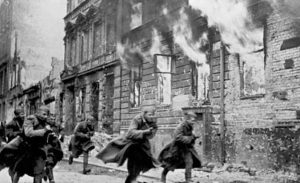 Kristallnacht, translated “Crystal Night,” referred to as the Night of Broken Glass, was an atrocious pogrom against Jews throughout Nazi Germany that took place on November 9–10, 1938. It was carried out by Sturmabteilung (SA) paramilitary forces and civilians. The German authorities looked on without intervening as the mobs tore through the towns. The attacks were said to be retaliation for the assassination of the Nazi German diplomat Ernst vom Rath by Herschel Grynszpan, a seventeen year old German-born Polish Jew living in Paris. I guess I don’t understand why the act of one person should cost the lives of so many.
Kristallnacht, translated “Crystal Night,” referred to as the Night of Broken Glass, was an atrocious pogrom against Jews throughout Nazi Germany that took place on November 9–10, 1938. It was carried out by Sturmabteilung (SA) paramilitary forces and civilians. The German authorities looked on without intervening as the mobs tore through the towns. The attacks were said to be retaliation for the assassination of the Nazi German diplomat Ernst vom Rath by Herschel Grynszpan, a seventeen year old German-born Polish Jew living in Paris. I guess I don’t understand why the act of one person should cost the lives of so many.
The name Kristallnacht comes from the shards of broken glass that littered the streets after the windows of Jewish-owned stores, buildings, and synagogues were smashed. Of course, the carnage didn’t stop with the windows. Estimates of the number of fatalities caused by the pogrom have varied. Reports in 1938 estimated that 91 Jews were murdered during the attacks, but modern analysis of German scholarly sources by historians such as Sir Richard Evans puts the number much higher. It also includes deaths 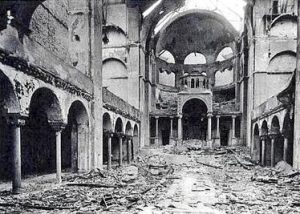 from post-arrest maltreatment and subsequent suicides as well, and puts the death toll into the hundreds. Additionally, 30,000 Jewish men were arrested and incarcerated in concentration camps. The numbers of those killed there are unknown, but we can easily imagine based on what we know of the Holocaust.
from post-arrest maltreatment and subsequent suicides as well, and puts the death toll into the hundreds. Additionally, 30,000 Jewish men were arrested and incarcerated in concentration camps. The numbers of those killed there are unknown, but we can easily imagine based on what we know of the Holocaust.
Breaking windows wasn’t enough for these mobs either. Jewish homes, hospitals, and schools were ransacked, as the attackers demolished buildings with sledgehammers. The rioters destroyed 267 synagogues throughout Germany, Austria, and the Sudetenland, and over 7,000 Jewish businesses were either destroyed or damaged. The British historian Martin Gilbert wrote that no event in the history of German Jews between 1933 and 1945 was so widely reported as it was happening, and the accounts from the foreign journalists working in Germany sent shock waves around the world. At that time it was still hard to believe that mobs of lawless people could  exist, but that was 80 years ago. These days we have no problem believing it, because these actions are almost commonplace.
exist, but that was 80 years ago. These days we have no problem believing it, because these actions are almost commonplace.
The British newspaper The Times wrote at the time: “No foreign propagandist bent upon blackening Germany before the world could outdo the tale of burnings and beatings, of blackguardly assaults on defenseless and innocent people, which disgraced that country yesterday.” Kristallnacht was followed, of course, by additional economic and political persecution of Jews, and it is viewed by historians as part of Nazi Germany’s broader racial policy, and the beginning of the Final Solution and The Holocaust.
 I didn’t know my husband’s Uncle Butch Schulenberg when he was young of course, but I have had the opportunity to get to know him over the past few years, and I feel very privileged to know him. He is a kind and loving man, who loves his family very much. I think that when it comes to his grandchildren, he is probably a big teddy bear, and I think they all know it. Of course, he would never admit it, but his family knows.
I didn’t know my husband’s Uncle Butch Schulenberg when he was young of course, but I have had the opportunity to get to know him over the past few years, and I feel very privileged to know him. He is a kind and loving man, who loves his family very much. I think that when it comes to his grandchildren, he is probably a big teddy bear, and I think they all know it. Of course, he would never admit it, but his family knows.

As a young boy though, the youngest of his dad’s children, I think he must have been quite a kid. I don’t know if growing up as the sheriff’s son would have made him think he could get away with more than most people, but I think he might have had a side of him that might consider trying it to see how things went. Of course, not as a little boy. From what I’ve seen in the pictures he let me copy, he was a little boy who maybe liked his wheels. I found a picture of him on his tricycle, and later a picture of him with a car. The boy going from one set of wheels to another. It looked like a 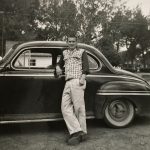 pretty nice car to me. I imagine he was well liked in high school…and I can see why people liked him, because he is a very likable guy.
pretty nice car to me. I imagine he was well liked in high school…and I can see why people liked him, because he is a very likable guy.
Not much has changed with Butch, at least not in his personality. He is still the kind of guy you want to be around. He always has nice things to say about people, and he always makes you feel welcome. Anyone who knows him feels blessed to know him. I haven’t known him well for my whole time in this family, but I consider him to be one of my very favorite people. And today is Butch’s birthday. Happy birthday Butch!! Have a great day!! We love you!!
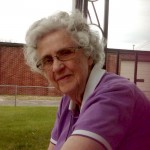 My mom always had quite a bit in common with her older sister, Evelyn Hushman. My mom was close to all her sisters, but she and Aunt Evelyn had things in common that she maybe didn’t with some of the other sisters. I think it’s possible that it was their husbands got along very well. In fact, even before my mom was married, my parents, Al and Collene Spencer double dated with Aunt Evelyn, and her husband, my Uncle George. After both couples were married and had children, we all spent lots of time together. I remember growing up playing with the Hushman kids, and because they
My mom always had quite a bit in common with her older sister, Evelyn Hushman. My mom was close to all her sisters, but she and Aunt Evelyn had things in common that she maybe didn’t with some of the other sisters. I think it’s possible that it was their husbands got along very well. In fact, even before my mom was married, my parents, Al and Collene Spencer double dated with Aunt Evelyn, and her husband, my Uncle George. After both couples were married and had children, we all spent lots of time together. I remember growing up playing with the Hushman kids, and because they  were all a little bit older than I was, they usually set the tone for the games. It didn’t matter, because it was always fun.
were all a little bit older than I was, they usually set the tone for the games. It didn’t matter, because it was always fun.
Later, my parents bowled on the same team on Monday nights with Aunt Evelyn and Uncle George. They bowled together for a number of years, and then they decided to quit, with the exception of Aunt Evelyn, who bowled for many years after. In fact, when she was bowling with her daughters, I substituted on their team many times. I enjoyed bowling with them, because it kept our families close.
As the years went by, they quit bowling too, and I began to see less and less of Aunt Evelyn. That made me sad. Everyone is so busy thee days, and before you know it, the ones you love have grown into their latter 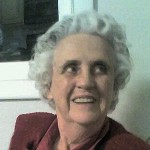 years, and you find yourself wondering where the time has gone. That was where I found myself with Aunt Evelyn, seeing her at the family Christmas party and the annual family picnic, and then not even at those. When Aunt Evelyn passed away on May 4, 2015, just a little over two months after my mom passed away, I found myself feeling very sad and lonely, because we had lost them both within such a short time, but I guess the sisters, who always had so much in common, were together again, and enjoying their new lives. Today would have been Aunt Evelyn’s 90th birthday. Happy birthday in Heaven Aunt Evelyn. We love and miss you very much.
years, and you find yourself wondering where the time has gone. That was where I found myself with Aunt Evelyn, seeing her at the family Christmas party and the annual family picnic, and then not even at those. When Aunt Evelyn passed away on May 4, 2015, just a little over two months after my mom passed away, I found myself feeling very sad and lonely, because we had lost them both within such a short time, but I guess the sisters, who always had so much in common, were together again, and enjoying their new lives. Today would have been Aunt Evelyn’s 90th birthday. Happy birthday in Heaven Aunt Evelyn. We love and miss you very much.
 A couple of days ago, I wrote a story about the denazification process that took place in post-World War II Germany and in the American concentration camps. while the story inspired thoughts of horror as the German soldiers discovered the truth about the atrocities of Hitler, it also made me a couple of my readers think about events that are far more recent. the feelings that American citizens have against each other in these tumultuous times in which we live. It makes me wonder, just how we got here. Of course, it’s the same way the Nazis got to where they were…hatred.
A couple of days ago, I wrote a story about the denazification process that took place in post-World War II Germany and in the American concentration camps. while the story inspired thoughts of horror as the German soldiers discovered the truth about the atrocities of Hitler, it also made me a couple of my readers think about events that are far more recent. the feelings that American citizens have against each other in these tumultuous times in which we live. It makes me wonder, just how we got here. Of course, it’s the same way the Nazis got to where they were…hatred.
Nevertheless, I think there is a bigger problem in this day and age, because along with the hatred there is a civil war of sorts going on. The political controversy between Republicans and Democrats has taken a turn toward different forms of hatred. My readers cited the recent shootings at a Jewish temple in Pennsylvania, which very much reminds us of the hatred that Hitler had for the Jewish people, but that isn’t all there is to it. Slavery was abolished many years ago,and or many years racism was practically gone in America, then suddenly because of the rhetoric of a president who was set upon stirring up racism again for his own agenda, we are suddenly faced with that kind of hatred again. The hatred doesn’t follow race either. Along with the the racial fighting we have now, came the hatred for certain groups such as the military and the police.
In fact, this latest version of nazi’ism for lack of a better word, seemed to authorize the hatred of anything we didn’t agree with. To top it off, we have video games that make killing seen like a game, and mobs seem like  fun. There are even games played with text messages to bring mobs together to terrorize. People have been so desensitized to death from television, games, and movies, that I’m not even sure that making people sit and watch a movie showing what was happening would really change anything. The news already does that, and we have become used to that too. So, how do we change this present world from one in which hatred is the excepted normal to one that understands the value of life…all life, not just one race or one group. Of course, the only real way to do that is to learn to love each other. Will that stop the political wrangling? Probably not, but if we realize that we can have a difference of opinion and still love each other, maybe we can move in that direction.
fun. There are even games played with text messages to bring mobs together to terrorize. People have been so desensitized to death from television, games, and movies, that I’m not even sure that making people sit and watch a movie showing what was happening would really change anything. The news already does that, and we have become used to that too. So, how do we change this present world from one in which hatred is the excepted normal to one that understands the value of life…all life, not just one race or one group. Of course, the only real way to do that is to learn to love each other. Will that stop the political wrangling? Probably not, but if we realize that we can have a difference of opinion and still love each other, maybe we can move in that direction.
 Over the years of my marriage to my husband, Bob, I have had the great privilege to know his family, both here in Casper, Wyoming, in Forsyth, Montana, and other areas of the United States. I can tell you that they are all wonderful, hard working people, and upstanding citizens. Bob’s uncle, Eddie Hein, like Bob and his dad, Walt Schulenberg, worked in the mines in the area they lived in. They didn’t work in the same mines, but they were all in mining. For those who don’t know, mining is hard work…no matter what part of mining you are in. From the people who keep the
Over the years of my marriage to my husband, Bob, I have had the great privilege to know his family, both here in Casper, Wyoming, in Forsyth, Montana, and other areas of the United States. I can tell you that they are all wonderful, hard working people, and upstanding citizens. Bob’s uncle, Eddie Hein, like Bob and his dad, Walt Schulenberg, worked in the mines in the area they lived in. They didn’t work in the same mines, but they were all in mining. For those who don’t know, mining is hard work…no matter what part of mining you are in. From the people who keep the 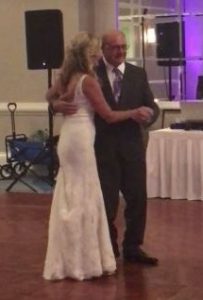 equipment running, to the operators of the equipment, each plays a vital role in the mining process. Eddie worked in the mines for a long time, and was a valued member of the crew.
equipment running, to the operators of the equipment, each plays a vital role in the mining process. Eddie worked in the mines for a long time, and was a valued member of the crew.
When Eddie came home from work, the work didn’t just stop. Eddie worked a lot over the years to remodel their home. What started out as a little house, slowly grew into a beautiful home. I was especially impressed with the beautiful fireplace he built. The rock work was stunning, and it added an elegant touch to the house. 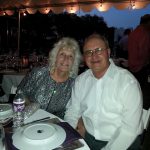 Eddie worked hard to make his house into a great home for his family. It was a place that we all enjoyed visiting whenever we made the trip to Forsyth.
Eddie worked hard to make his house into a great home for his family. It was a place that we all enjoyed visiting whenever we made the trip to Forsyth.
Eddie was always a symbol of strength and stability to everyone who knew him, and is still a source of inspiration today. Following a stroke,Eddie worked his way back to health, and was able to take the trip to Miramar Beach, Florida to walk his daughter Kim down the isle on her wedding day. It was a happy day for all. Today is Eddie’s 75th birthday. Happy birthday Eddie!! Have a great day!! We love you!!

